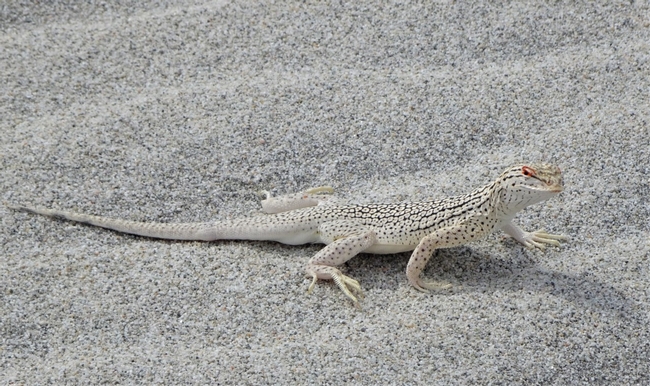A "Natural History Note" From UC California Naturalist's lead scientist, Dr. Cameron Barrows, in celebration of California Biodiversity Day.
“Any intelligent fool can make things bigger, more complex, and more violent. It takes a touch of genius — and a lot of courage to move in the opposite direction.” - E.F. Schumacher
Asking questions about patterns in nature, or perhaps the sometimes apparent lack of patterns, can seem to lead to more confusion than answers. Why is this species here but not there? Why are there so many species here but not there? Why is this population growing while that population seems to be in decline? The number of questions one can ask is nearly endless, but solid answers are far scarcer. For those wanting a future that includes existing natural assemblages of plants and animals for their own sake, for a resilient earth, as well as for awe, enjoyment, and inquiry of future generations, these sorts of questions are more than just an intellectual exercise, they are critical for knowing the impact of our footprint on this planet, and with that knowledge how we might step a bit more lightly and soften that footprint.
Knowing where species occur and ideally some measures of their abundance are often the first questions. If you know those answers for some point in time, you can return later to see if numbers or occurrences have changed. Growth is good, declines are bad. Simple, right? Or is it too simple? Darwin and Wallace were inspired by economist Thomas Malthus' essay on population growth. Malthus was speaking about people and showed mathematically that unless there were wars, famine. or pandemics, human populations would grow geometrically until they had consumed all available resources. Darwin and Wallace extrapolated that prediction to the rest of nature and recognized that species were not growing until they had devoured all available resources. Rather species' populations ebbed and flowed. Nature is always in flux. For Darwin and Wallace, survivors of times when resources were scarce represented individuals that were better able to survive and pass those traits onto future generations. Ipso facto, survival of the fittest.
Changes in population abundances occur with seasons, between years, between decades, and beyond; the difference might be due to the vagaries of temperature, precipitation, food supplies, vegetation cover, or even the abundance of a competitor or a predator. In a laboratory you can try and control variables. In nature everything is a variable. The size and location of populations of plants and animals reflect the strength of those variables. Recording only the occurrence or abundance of a species without the context of the most important variables is almost meaningless. Long ago, when I first started surveying Coachella Valley fringe-toed lizards, I noted that the populations had been declining for several years. There was an immediate uproar claiming that the conservation design for the lizard was clearly inadequate and we needed to start over before it was too late. In arid environments drought is common, while consistently wet conditions are rare. Yet rain inputs and the plant and insect populations those rains catalyze are essential for positive population growth in desert species. It had been three years of drought and I argued that before starting over we need at least one wet year. The next year was wet and the lizard population doubled. Context is everything.
I (along with an invaluable cadre of community scientists) still keep tabs on those fringe-toed lizards. The last couple years, 2019 and 2020, were a bit wetter than average and so there should have been positive population growth. For populations in the western Coachella Valley, north of Palm Springs, that was certainly what happened. However, for populations in the eastern-central portions of the valley, north of Palm Desert and La Quinta, those populations did not grow. How could I explain the lack of response to what has been the strongest variable influencing the lizard's population fluctuations? Was there some missing variable that required better management to restore, or was this a long-anticipated decline, a symptom of hyper aridity catalyzed by modern climate change? For most other lizard species there is an option for their populations to incrementally expand into cooler less arid habitats at higher elevations as lower elevations become increasing arid and less productive. Because fringe-toed lizards are inextricably tied to their sand dune habitat, moving up a mountain slope is not an option. There is a strong east-west gradient in rainfall in the Coachella Valley, with the western areas receiving up to and sometimes exceeding twice the rainfall of the central-eastern regions. Was this different response between the western and eastern/central fringe-toed lizard populations a signal that we had reached an aridity tipping point dooming those central-eastern populations?
That western-eastern difference in response to rainfall levels is precisely what I would have predicted if climate change was the culprit. But are there other possible explanations? Another variable that we measure is sand compaction. Fringe-toed lizard populations are more abundant where sands are less compacted. Sand compaction results from reductions in new sand inputs from sand sources. One of the greatest challenges in crafting a system of protected areas for the fringe-toed lizards was to include corridors that would deliver sand from sand sources to sand deposition areas. Sand movement through the corridors occurs due to both floods and high winds, both of which are antithetical to human habitation. By the time the fringe-toed lizard conservation plans were being developed, all the sand corridors were compromised by human development to one degree or another, but one of the most compromised regions was that central-eastern dune system.
So, while the western-eastern difference in response to rainfall levels is precisely what I would have predicted if climate change was the culprit, so would it be if a lack of new sand inputs-increasing sand compaction was the culprit. Our sand compaction measures did indicate increasing compaction in the central-eastern sand dunes, but that does not rule out climate change. What may be the best evidence for determining the relative strength of sand compaction versus increasing aridity in dictating the fringe-toed lizard abundance, was the abundance of other species, species that were not so tied to low sand compaction. Flat-tailed horned lizards occur of the central-eastern sand dunes, but they prefer sites with higher sand compaction. If they too did not increase their populations in response to the 2019-2020 wetter years, the scales would tip in favor of hyper aridity reducing food and overall habitat suitability for insectivorous lizards. On the other hand, if the horned lizard populations increased as did the fringe-toed populations on the western sand dunes, then sand compaction-lack of new sand delivery was more likely the stronger variable. The 2020-2021 horned lizard population was the highest we had measured in almost two decades. Context matters.
Nullius in verba
Go outside, tip your hat to a chuckwalla (and a cactus), think like a mountain, and be safe
September 4-12, 2021 is California Biodiversity Week. Join us in celebrating the unique biodiversity and renewing our commitment to stewarding the state's incredible natural heritage! During the Week, CalNat is posting blogs authored by members of our community, ending in our September 14th CONES event from noon-1:00 PM. Be sure to also check out a list of activities and resources online from the CA Natural Resources Agency!

